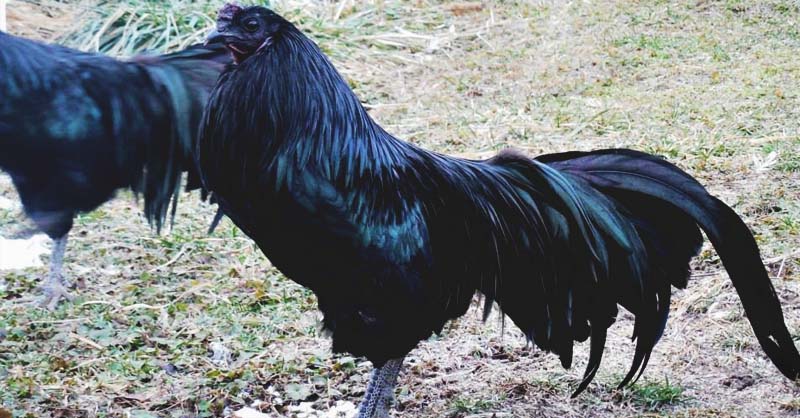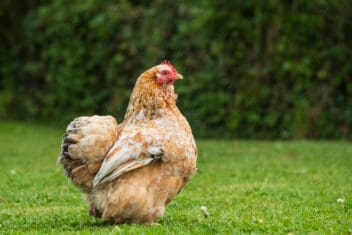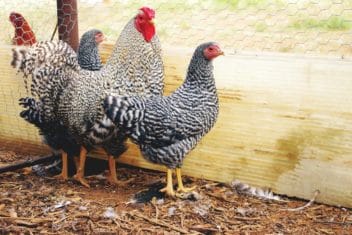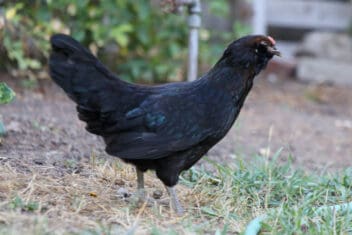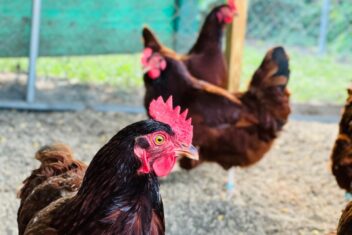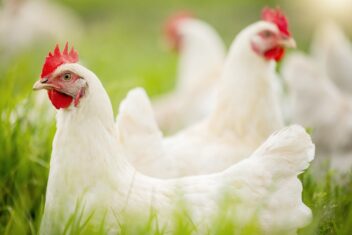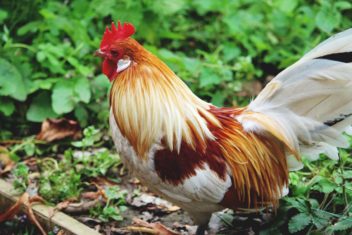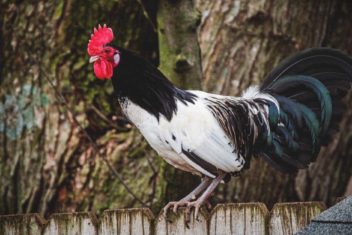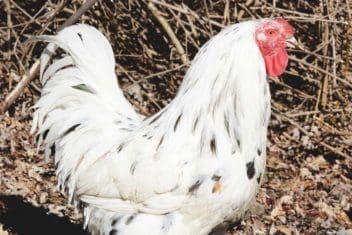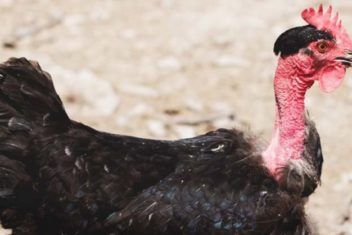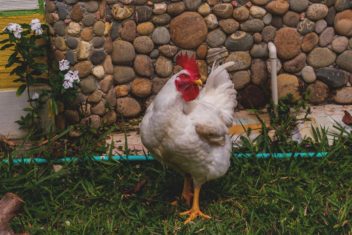Sumatra Chickens were primarily cultivated and shaped by the jungle islands just off Indonesia. These birds are eye catchers and head turners with very active and independent personalities. While the primary purpose of Sumatras nowadays is for exhibition, their self-sufficient dispositions make them well suited to a life off-grid on a homestead.
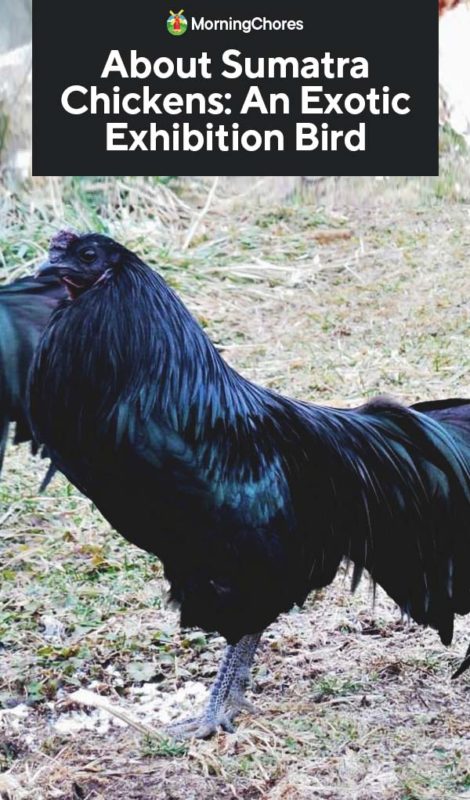
About Sumatra Chickens
This chicken is a jungle fowl type bird that originated on the Isle of Sumatra. There was very little human interference when it came to the making of this breed, and they are a rather wild bird.
These chickens made their debut into the United States in April of 1847, introduced by J.A.C. Butters, from Massachusetts. In 1883, the Black Sumatra was accepted into the American Standard of Perfection.
Sumatra Characteristics
1. Size and Weight
As with most jungle fowl, you will not find Sumatras to be particularly large birds. Although their tails can give off a more substantial appearance, carcass sizes are rather dainty. Expected full grown weight of a Sumatra rooster is five pounds. Hens are a bit smaller, weighing approximately four pounds at maturity.
2. Temperament
Since this is not an especially domesticated breed, they have wild personalities. Hens make good mothers, but not pets.
Roosters can be very territorial towards other roosters. It’s best not to keep multiple roosters in a pen together, but if you do, make sure there are plenty of hens and extra space.
3. Egg Production
Egg production from the Sumatra hens is not the best out there. In the wild, birds only need to lay eggs a few times a year to hatch out chicks, so they don’t have the most streamlined production.
In addition to this, Sumatra hens frequently go broody and do not lay eggs during this time. Average egg production is 100 smallish white eggs per year.
4. Meat Production
Sumatras are not the ideal bird for meat production. Their small carcasses simply don’t yield much meat, in addition to the fact that the meat quality from these gangly birds probably wouldn’t be the best.
Caring for Sumatra Chickens
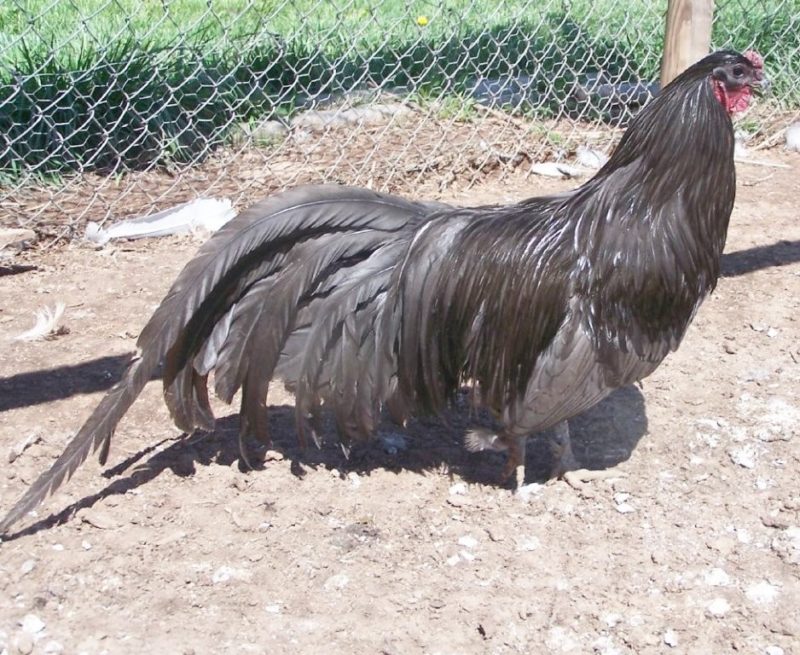
1. Feeding and Nutrition
As chicks, you will need to provide them chick starter until about 8-12 weeks of age. Once your birds are nearing adulthood, a good laying feed will do well for them. Due to their wild background, Sumatras make fantastic foragers and can supplement a large part of their diet with foraged food.
It’s also a good idea to provide Sumatra Chickens with protein-enriched treats such as mealworms so they can keep their feathers growing healthy.
2. Housing and Fencing
When it comes to housing your Sumatras, it will depend on your intent for the birds as to how you house them. If you plan on using your birds for exhibition, you may want to consider raised cages during show season. With the long and flowy tails these birds have, many poultry keepers house their birds up out of the mud and dirt to keep them in peak condition for showing.
Otherwise, a regular coop will do well for your birds. During the offseason for showing, keep your show birds in a regular chicken coop so they can just “be chickens” to their heart’s content. It’s a good idea to provide 3-4 square feet per bird as a general rule of thumb, so your birds have plenty of room.
Unless you have a covered run, don’t even attempt keeping these birds contained in a run. Their jungle fowl blood has Sumatras well equipped to fly high and far distances. These birds definitely do best in a free range environment.
3. Health Issues and Care
One great benefit to less domesticated breeds such as this Sumatra, means they have excellent immune systems. In the jungle where these birds were bred initially, it was survival of the fittest. The strongest birds carried on the lines and immunity against many sicknesses were inborn.
As always, make sure to keep out a close eye for external and internal parasites such as worms, lice, and mites. These pesky bugs need to be prevented at all costs.
4. Breeding
Breeding this chicken can be a fun project that could even make you some money! This is a very rare breed and people will pay well to get good quality birds. In the breeding business, you may want to have a few different Sumatra chicken roosters. You may need a few pens to make sure you’re not overcrowding the roosters and causing excessive fights.
Breed Alternatives
1. Yokohama Chicken
The Yokohama is a Japanese breed with a similar appearance to the Sumatra but in different colors. This is also a long-tailed breed with the main use being eye candy and exhibition. If you like Sumatras then you will probably love the Yokohama!
Did You Know?
Back on the island where Sumatra Chickens originated, locals would capture the roosters of this breed during breeding season when they were most aggressive. Their reason for capturing the roosters was for cockfighting. This is fortunately no longer in practice but is part of why the roosters have the temperaments they do.
This is certainly a spectacular bird with lots of character that you won’t find in just any bird. One of two of these elegant birds with long and flowing tails will certainly give your yard a gorgeous flair.

